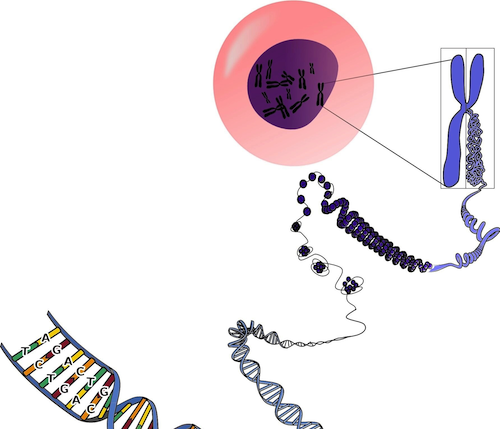|

CLICK ON weeks 0 - 40 and follow along every 2 weeks of fetal development
|
||||||||||||||||||||||||||||
|
Developmental Biology - Cord Blood Cord Blood DNA Holds Clues for Early ASD Diagnosis These attachments are sometimes passed on from cell to cell as cells divide. They can also be passed down from one generation to the next. Neonatal epigenomes have the potential to reflect past interactions between genes and environment during early development — and may influence future health. Factors in Fetal Cord Blood That Might Predict Autism Researchers studied the development of 152 children born to mothers enrolled in the MARBLES and EARLI studies. These mothers had at least one older child with autism and were considered at high risk of having another child with ASD. When their next child was born, the mothers' umbilical cord blood samples were preserved for analysis. At 36 months, the children were diagnostically and developmentally assessed. Based on test results, researchers grouped the children as "typically developing" (TD) or "with ASD." They also analyzed the umbilical cord blood samples taken at birth from their mothers and performed whole-genome sequencing on these blood samples, to identify any epigenomic signature or mark of ASD at birth. They were checking for any patterns of DNA-epigenome binding that could predict future ASD diagnosis. They split the samples into discovery and replication sets and stratified them by sex. The discovery set included samples from 74 males (39 TD, 35 ASD) and 32 females (17 TD, 15 ASD). The replication set was obtained from 38 males (17 TD, 21 ASD) and eight females (3TD, 5 ASD). Using the samples in the discovery set, researchers identified specific regions in the genomes linked to ASD diagnosis. They tested the DNA methylation profiles for DMRs between ASD and TD cord blood samples — and then mapped the DMRs to genes and assessed them in gene function, tissue expression, chromosome location and overlap with prior ASD studies. They later compared the results between discovery and replication sets and between males and females. Cord Blood to Reveal Insights Into ASD Genes Researchers identified DMRs stratified by sex, that discriminated ASD from TD cord blood samples in discovery and replication sets. Seven regions in males and 31 in females replicated, and 537 DMR genes in males and 1,762 DMR genes in females replicated by gene association. DMRs identified in cord blood also overlapped with binding sites relevant to fetal brain development. Thus showing brain and embryonic expression and X chromosome location and matched with prior epigenetic studies of ASD. "Findings from our study provide key insights for early diagnosis and intervention. We were impressed by the ability of cord blood to reveal insights into genes and pathways relevant to the fetal brain." The researchers pointed out their results require further replication before being used diagnostically. But, the study serves as important proof of principle that cord blood methylome is informative about future ASD risk. Abstract Background Autism spectrum disorder (ASD) is a neurodevelopmental disorder with complex heritability and higher prevalence in males. The neonatal epigenome has the potential to reflect past interactions between genetic and environmental factors during early development and influence future health outcomes. Methods We performed whole-genome bisulfite sequencing of 152 umbilical cord blood samples from the MARBLES and EARLI high-familial risk prospective cohorts to identify an epigenomic signature of ASD at birth. Samples were split into discovery and replication sets and stratified by sex, and their DNA methylation profiles were tested for differentially methylated regions (DMRs) between ASD and typically developing control cord blood samples. DMRs were mapped to genes and assessed for enrichment in gene function, tissue expression, chromosome location, and overlap with prior ASD studies. DMR coordinates were tested for enrichment in chromatin states and transcription factor binding motifs. Results were compared between discovery and replication sets and between males and females. Results We identified DMRs stratified by sex that discriminated ASD from control cord blood samples in discovery and replication sets. At a region level, 7 DMRs in males and 31 DMRs in females replicated across two independent groups of subjects, while 537 DMR genes in males and 1762 DMR genes in females replicated by gene association. These DMR genes were significantly enriched for brain and embryonic expression, X chromosome location, and identification in prior epigenetic studies of ASD in post-mortem brain. In males and females, autosomal ASD DMRs were significantly enriched for promoter and bivalent chromatin states across most cell types, while sex differences were observed for X-linked ASD DMRs. Lastly, these DMRs identified in cord blood were significantly enriched for binding sites of methyl-sensitive transcription factors relevant to fetal brain development. Conclusions At birth, prior to the diagnosis of ASD, a distinct DNA methylation signature was detected in cord blood over regulatory regions and genes relevant to early fetal neurodevelopment. Differential cord methylation in ASD supports the developmental and sex-biased etiology of ASD and provides novel insights for early diagnosis and therapy. Authors Charles E. Mordaunt, Julia M. Jianu, Benjamin I. Laufer, Yihui Zhu, Hyeyeon Hwang, Keith W. Dunaway, Kelly M. Bakulski, Jason I. Feinberg, Heather E. Volk, Kristen Lyall, Lisa A. Croen, Craig J. Newschaffer, Sally Ozonoff, Irva Hertz-Picciotto, M. Daniele Fallin, Rebecca J. Schmidt and Janine M. LaSalle. Acknowledgements This work was supported by NIH grants: K12HD051958, P01ES011269, P30ES023513, R01ES016443, R01ES017646, R01ES020392, R01ES025531, R01ES025574, R01ES029213, R01ES028089, R24ES028533, U54HD079125, 1UG3OD023365, and UH3OD023365; EPA STAR grant RD-83329201; Autism Speaks grant 5938; Canadian Institutes of Health Research (CIHR) postdoctoral fellowships: MFE-146824, BPF-162684; and the MIND Institute IDDRC P50HD103526. The authors would like to sincerely thank the participants in the MARBLES and EARLI studies. Return to top of page. | Oct 28 2020 Fetal Timeline Maternal Timeline News  Image depicts DNA from the nucleus of a cell unraveling into the DNA ladder. Upon this ladder, scientists at UC Davis found evidence confirming a DNA methylation signature for Autism Spectrum Disorder (ASD) in cord blood at birth. CREDIT Nursing Outlook.
| ||||||||||||||||||||||||||||

